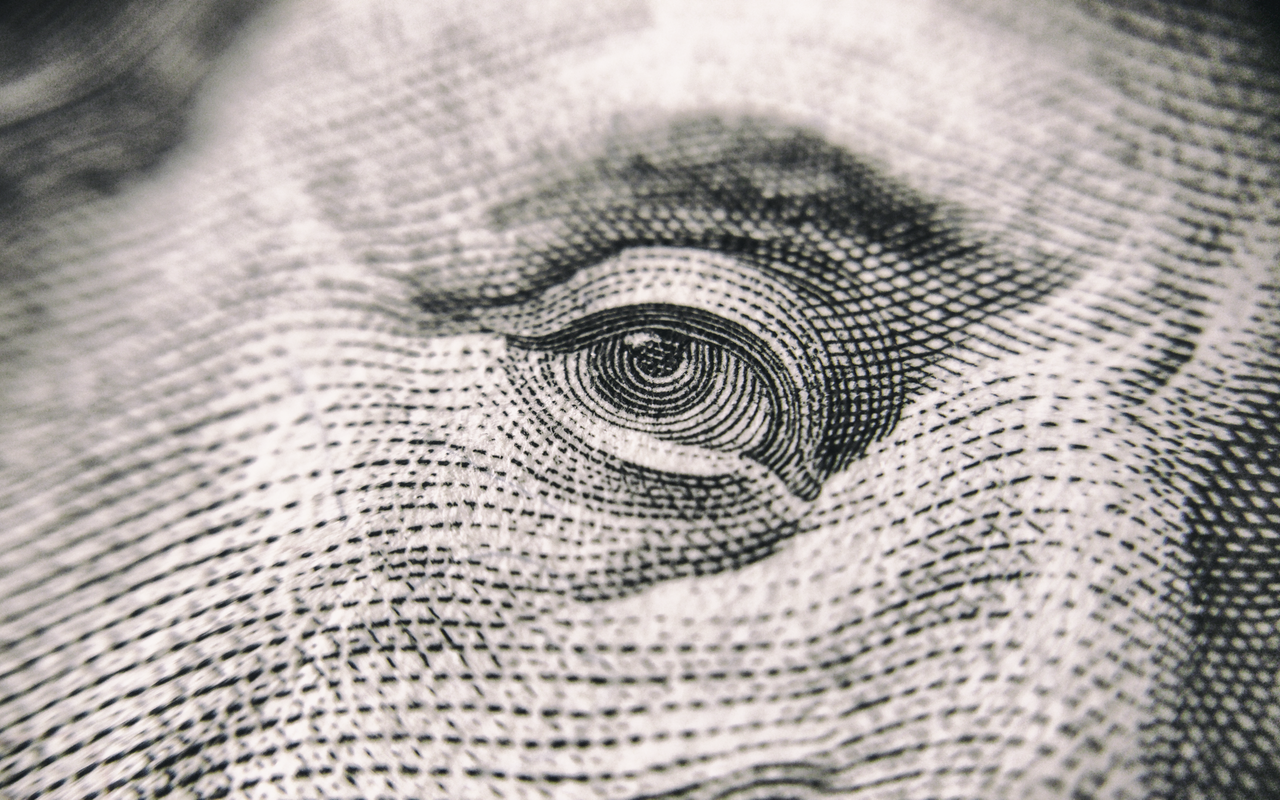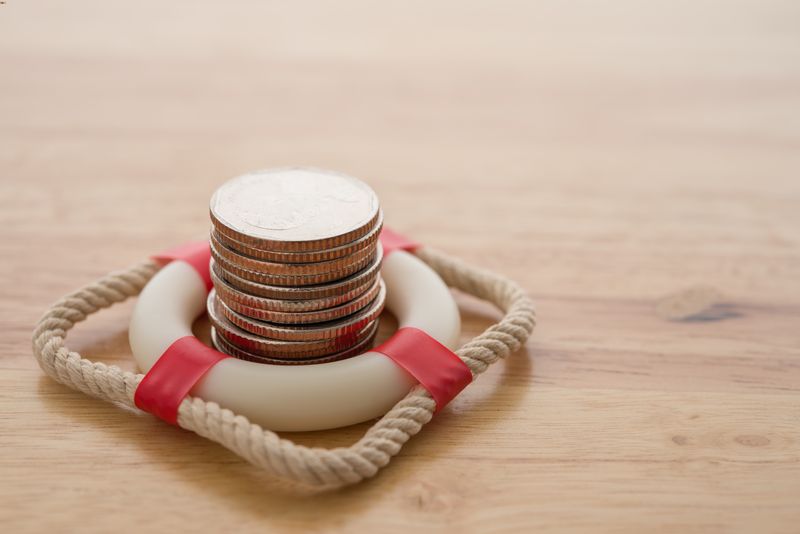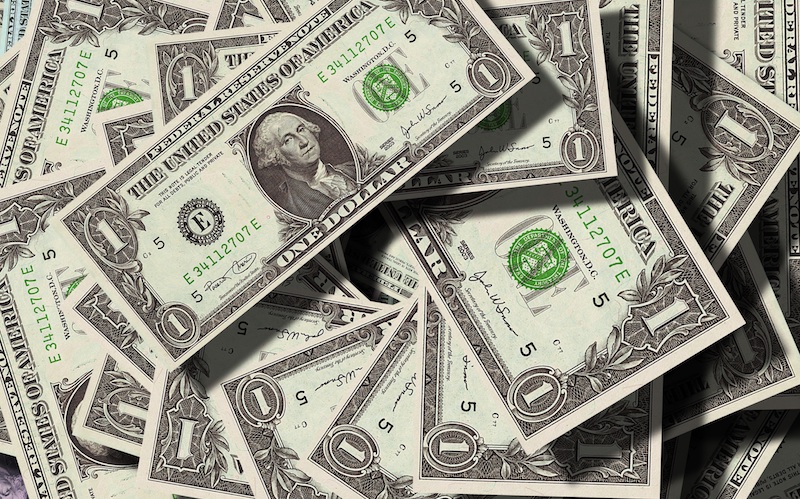"Emergency fund" typically is taken to mean money in a bank account.
It should definitely include some money in a bank account, but keeping all of it in a bank account is usually not the right call for most people who have "at least OK" job stability.
This post covers what you should "count" as your emergency fund, but we're not going to focus on how to tactically save up your emergency fund - we cover that in How to Build Your Emergency Fund.
I worked on Wall Street through the entire financial crisis, so I'm very familiar with volatility and the risk of down markets. Big market losses do happen, and will happen again in the future.
The question is how you manage that risk so that you're positioned to grow your wealth over the long term, but don't get "completely hosed" in a really bad scenario (e.g. you lose your job at precisely the time markets are tanking).
My main concern with the conventional wisdom of saving 3-6 months in a bank account is the missed opportunities:
- Missed retirement account contributions
- Missed employer match
- Missed opportunity for long-term growth of your wealth
I'd have at least 2 months of essential household expenses in cash, preferably a high-yield bank account. (If this sounds financially challenging to you, check out How to Build Your Emergency Fund, where we offer some alternate approaches.) You can obviously choose a higher number if you feel that suits your situation.
Beyond that, you can expand the definition of your emergency fund to include other money you can access easily and without penalty.
The Two Goals
1) Get you thinking about how you can build wealth for the future, and not spend years of your life with a huge chunk of your net worth locked up in a lucky-if-you-keep-pace-with-inflation investment
2) Keep you from "getting hosed" if life throws you a curveball when markets are down
What You Can Count In Your Emergency Fund
1) Contributions to your Roth IRA, but be sure to "haircut" them as needed
If your household income makes you eligible for a Roth IRA, this can be a great place to house the non-bank-account portion of your emergency fund because Roth IRAs also allow you to take back your contributions any time, regardless of your age, with no penalty or tax. It's your money, free and clear.
The same is not true of any investment gains on your contributions...you should plan to leave those alone until at least age 59 1/2 (when withdrawals are tax and penalty-free).
Maybe you're thinking, "wait, I should count stocks as part of my emergency fund?"
Yes, you can, but you need to haircut your higher return / higher risk investments (like stocks) big time.
I'd strongly suggest only counting broad, well-diversified index funds (like the S&P 500) or actively managed funds that use them as their benchmarks, and haircutting them by 50%.
How A Haircut Works
Let's illustrate with an example.
Say you've got a $50,000 Roth IRA, invested entirely in equities.
And say that $50,000 was generated by $30,000 in contributions over the years + $20,000 in market gains.
How much of that $50,000 should you count as your emergency fund?
You might say $30,000 since that's how much you could withdraw penalty and tax-free from your Roth IRA anytime, but that would be ill-advised. If your account were to lose 50% of its value during a bad market (this actually happened during the 2008 Financial Crisis), you would only have $25,000 in the account. So you should really be planning with this "50% haircut" in mind, meaning you only consider $25,000 of the $50,000 as available for "emergency resources".
Yes, your $30,000 of cumulative contributions just became $25,000 of available emergency fund. That's OK, though, because this is how you position yourself for long-term wealth creation without getting hosed when $@#! hits the fan (and it will, it always does at some point).
100% - % Haircut = % You Can "Count" in Your Emergency Fund
Example: 50% Haircut --> (100% - 50% haircut) = 50% can be counted
So why a 50% haircut? That's what actually happened from October 2007 to March 2009: equity markets were down about 50%. An ugly year and a half.
That's not to say it can't be worse in the future, but we also need to keep ourselves away from "eating canned food in the basement" here.
Rules for Haircuts
- Haircut 50%: any broad-based, diversified stock funds (e.g. S&P 500, MSCI EAFE, or actively managed funds that use such indices as their performance benchmarks) or broad-based bond funds
- Haircut 100%: meaning they are worth zero (100% - 100% = 0) for the purpose of your emergency fund: individual stocks*, bitcoin, that exchange traded note your grandmother's broker sold you...anything other than a clearly identifiable, diversified fund...if you can't tell, assume it's worth zero!
*I can't "see" how well-diversified your portfolio is, so I'll err on the side of extreme caution. With an S&P 500 fund, I know you're diversified. If you're a sophisticated investor, you can obviously judge your diversification for yourself.
These haircuts are obviously severe. They are definitely not the haircuts professional risk managers would use. A detailed analysis of haircutting assets is outside the scope of this post, and our goal here is different anyway...refer to #2 "Keep you from getting hosed when $@#! hits the fan" above.
2) Brokerage account
If you don't have access to a Roth IRA, it's a bit trickier. Other tax-advantaged retirement plans (Traditional IRAs, 401k, etc.) don't let you take back your contributions any time without penalty.
For example, Traditional IRAs will charge you a 10% penalty plus the tax you avoided earlier, when you withdraw before age 59 1/2. The tax alone is not so bad because you would have paid tax if you'd not put it in the Traditional deductible IRA - you're not worse off, just back to where you have been. It's the extra 10% that hurts! That penalty makes these retirement accounts not-so-good places to hold emergency funds.
A brokerage account offers total flexibility, but no special tax advantages. It is reasonable to consider a brokerage account as part of your total emergency resources, but be sure to haircut it as we did above.
My goal is to give you a basic framework for contemplating how you could responsibly achieve the two goals of being well-positioned to withstand a personal emergency at the same time markets are down and grow your net worth over the long-term.
As we said, this post is about how your emergency fund can look when you've got a decent-sized one built up.
To learn about how to build an emergency fund, check out How to Build Your Emergency Fund.
If you're ready to get great insights on your own financial priorities, try our AboveBoard Financial Action Plan.



